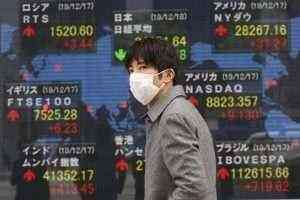
Trade fears could reach an inflection point as we approach the end of 2018, she says. We can certainly debate whether any Street denizens are good enough to get something besides coal during the holidays. Regardless, historical data supports https://investmentsanalysis.info/ the likelihood of a stock-market rally, often called the Santa Claus Rally, in the closing days of a calendar year and the first days of a new one. This year, however, a visit from the jolly man in red might not be in the cards.
But both time periods show negligible returns at best on average, making the Santa Claus rally something of a myth, just like the jolly old elf himself. It is the tendency for the market to rise in the last five trading days of the current year and the first two days of the new year. First discovered by Yale Hirsch of “Stock Trader’s Almanac,” it has produced positive returns 34 of the past 45 years for an average return of 1.4%.
- The U.S. stock market hit record highs leading up to Thanksgiving in 2020.
- Whether you count that time period or the week after Dec. 25 up to Jan. 2 of the new year, the returns are negligible, if slightly positive at +0.385%.
- A ‘Santa Claus Rally’ is a term used to describe the phenomenon where the stock market jumps in value during the last week of December and into the first two trading days of the new year.
- Look past the largest names, and there is some selling, particularly in the more speculative tech stocks that Cathie Wood’s ARK Innovation ETF owns.
- It is an interesting news headline happening on the periphery but not a reason to become either more bullish or bearish.
The Santa Claus Rally that produced the best returns was at the end of 2008 and beginning of 2009 when a recovery from the financial crisis was getting underway. According to The Stock Trader’s Almanac, the S&P 500 rallied 7.4% in the six-day period between 2008 and almost double the gains of the next strongest rally. “When it comes to the UK stock market, this success rate is even more pronounced, with December delivering positive returns 83% of the time,” he said.
Don’t Count on a ‘Santa Claus Rally’ to Save the Stock Market
The perceived causes for the rally include an overall, holiday-season spirit, in which retail traders hold an outsize bullish outlook and institutional players tend to step back from the market. There are two schools of thought about the timing of the Santa Claus rally effect on the Standard & Poor’s (S&P) 500 Index. The first suggests the Santa Claus rally occurs in the week leading up to and ending with Dec. 24, Christmas Eve.
For example, according to data compiled by LPL Research and FactSet, the Santa Claus rally period in 1999 saw the S&P 500 drop 4% and the Dotcom bubble burst in 2000. Similarly, corresponding trading days in 2007 saw the S&P 500 drop 2.5%, and 2008 saw the Great Recession. SmartAsset Advisors, LLC (“SmartAsset”), a wholly owned subsidiary of Financial Insight Technology, is registered with the U.S.
Will a Santa Claus rally happen in 2022?
“When you think of a Santa Claus rally, it’s all about anticipating or looking forward,” said Terry DuFrene, global investment specialist at J.P. “That is meaningful,” Batnick said of the difference in returns and positivity rate. Get insights into Jerome Powell’s speech at the Kansas City Fed’s Jackson Hole conference and find out how the Fed plans to bring inflation down to its 2% target. “Economists expect inflation to peak here in Q4 and for the next several quarters,” Marc Chandler, managing director at Bannockburn Global Forex, told me.
Only the Nasdaq Composite reported a loss in one year during the same period. Regardless of the mechanics behind the rally, it’s an observable effect and it occurs roughly two out of three years, so investors should be prepared to see whether Santa shows up at the end of each year. “The Santa rally is real,” and it could give your portfolio a boost between the end of this year and the start of 2022, according to an analysis from Bank of America. Historically, during a Santa Claus Rally, the S&P 500 has risen an average of 1.3% but it doesn’t happen every year so it isn’t 100% predictable. Asset allocation/diversification does not guarantee a profit or protect against loss.

While we can expect Santa Claus to deliver presents on time, we can’t expect him to always deliver reliable stock-market gains. The second major question is whether the Santa Claus rally really even exists. Again, looking at the historical performance of the S&P 500 over the last two decades, we conclude that it is nearly a toss-up between a tangible rally and a normal trading week. The week before Christmas typically has normal to significant volume, compared with the week after Christmas, which is usually marked by generally sideways stock-price movement with small ranges.
Will a Santa Claus Rally Occur in 2022?
According to The Stock Trader’s Almanac, the S&P 500 has gained an average of 1.3% since 1950 during the Santa Claus Rally periods. More recently, since the inception of the SPDR S&P 500 ETF Trust (SPY) in 1993, the Santa Claus Rally has produced gains 18 out of 27 times, or about 67% of the time. According to Gordon Scott, a member of the Investopedia Financial Review Board, since 1993 all other six-day periods produced positive SPY returns 58% of the time. Several theories try to explain the Santa Claus rally, including investor optimism fueled by the holiday spirit, increased holiday shopping, and the investing of holiday bonuses.
How a Santa Claus rally, or lack thereof, sets the stage for the stock market in first quarter – MarketWatch
How a Santa Claus rally, or lack thereof, sets the stage for the stock market in first quarter.
Posted: Tue, 27 Dec 2022 08:00:00 GMT [source]
Historically, this seven-day period has brought good news for investors, giving them another reason to cheer during the holiday season. In this study, we considered the performance of the S&P 500 during the last five trading days of December and first two trading days of January. Though time frames and market indexes vary when studying the Santa Claus rally, we used these frames of reference for two reasons. First, this time period follows the Stock Trader’s Almanac’s definition of Santa Claus rallies. And second, the S&P 500 is considered by many investors to be the most accurate representation of the general performance of the stock market.
How Do Recessions Affect the Santa Claus Rally?
The key elements include seasonal goodwill among investors, who are more willing to buy around Christmas. When it comes to Santa rally dates, however, it points out that the term is misunderstood. According to LPL Financial, a US-based advisory firm, the term was first adopted in 1972 by Yale Hirsch, creator of the Stock Trader’s Almanac.
Some cite economic and technical analysis, and others offer pure conjecture. Some investors use the existence of Santa Claus rallies as indicators for the coming year. If there’s a Santa Claus rally to end a year, the next year is expected to be good. Get more from a personalized relationship with a dedicated banker to help you manage your everyday banking needs and a J.P. Morgan Private Client Advisor who will help develop a personalized investment strategy to meet your evolving needs.
Securities and Exchange Commission, is a member of the Financial Industry Regulatory Authority, Inc. (), and is a member of the Securities Investor Protection Corporation (). In the United Kingdom, BrokerTec Europe Limited is authorised and regulated by the Financial Conduct Authority. Is regulated in the Netherlands by the Dutch Authority for the Financial Markets (AFM) (). Is also incorporated in the Netherlands and regulated by the Dutch Authority for the Financial Markets (AFM), as well as the Central Bank of the Netherlands (DNB). One is that stocks rally in the week between Christmas and New Year’s, and that carries into the second day of trading in the New Year, usually Jan 2. The other time-span definition—and our preferred one—is the week leading up to Dec. 24.
There are some hopes of a trade-war truce when President Donald Trump and President Xi Jinping of China meet at the G-20 summit in Argentina at the end of November. But the lack of a trade deal or even a cooling of tensions before tariffs are set to escalate on Jan. 1 could result in an ugly start to 2019 for equities in the U.S. and globally. Cramer said he thought Fed chief Jerome Powell “threaded the needle” during his Wednesday press conference and helped spark the afternoon stock rally. It is worth noting that the final week of the calendar year normally trades on lower volume than any other week. You should always conduct your own research before making any investment or trading decision.
Jim Cramer says the Santa Claus rally may have started early this year. Here’s why
Researchers have suggested a variety of theories as to why the Santa Claus rally happens. Some cite a general feeling of optimism and the investment of holiday bonuses. Others offer more concrete reasons, including tax considerations or the idea that more bullish retail investors tend to take control of the market when institutional investors go on vacation over the holidays. While the exact reasons a Santa Claus rally does or does not occur are difficult health care stocks to determine, SmartAsset decided to examine how often these rallies happen and their typical magnitude. Some believe that the rally is caused by the temporary bullish optimism of investors relaxing with family or from retail investors investing their holiday bonuses. There are also more general calendar trends called the ‘holiday effect’ or the ‘long-weekend effect’ where the stock market is theorized to perform better than average before holiday periods.
